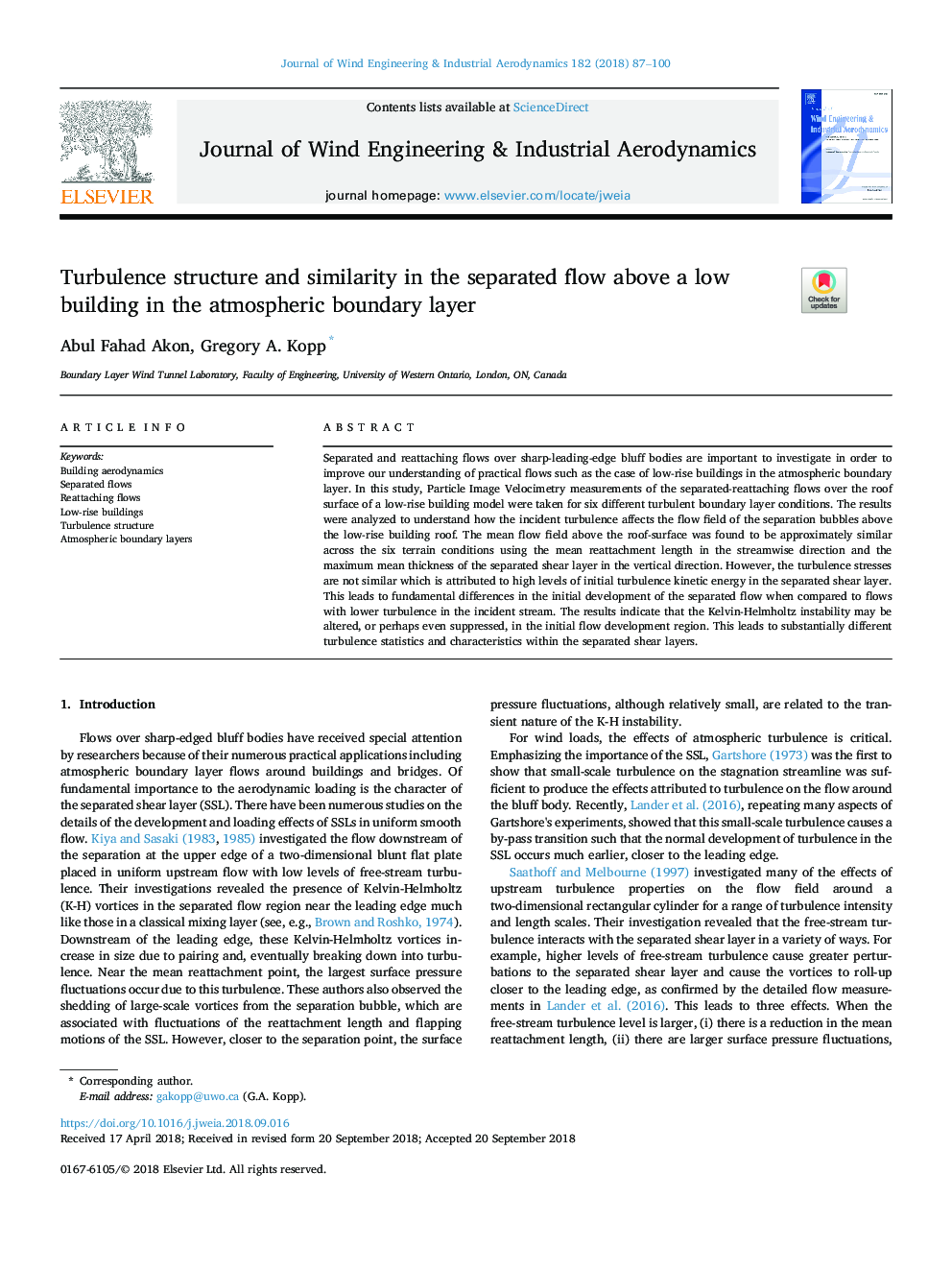| Article ID | Journal | Published Year | Pages | File Type |
|---|---|---|---|---|
| 10225457 | Journal of Wind Engineering and Industrial Aerodynamics | 2018 | 14 Pages |
Abstract
Separated and reattaching flows over sharp-leading-edge bluff bodies are important to investigate in order to improve our understanding of practical flows such as the case of low-rise buildings in the atmospheric boundary layer. In this study, Particle Image Velocimetry measurements of the separated-reattaching flows over the roof surface of a low-rise building model were taken for six different turbulent boundary layer conditions. The results were analyzed to understand how the incident turbulence affects the flow field of the separation bubbles above the low-rise building roof. The mean flow field above the roof-surface was found to be approximately similar across the six terrain conditions using the mean reattachment length in the streamwise direction and the maximum mean thickness of the separated shear layer in the vertical direction. However, the turbulence stresses are not similar which is attributed to high levels of initial turbulence kinetic energy in the separated shear layer. This leads to fundamental differences in the initial development of the separated flow when compared to flows with lower turbulence in the incident stream. The results indicate that the Kelvin-Helmholtz instability may be altered, or perhaps even suppressed, in the initial flow development region. This leads to substantially different turbulence statistics and characteristics within the separated shear layers.
Related Topics
Physical Sciences and Engineering
Energy
Renewable Energy, Sustainability and the Environment
Authors
Abul Fahad Akon, Gregory A. Kopp,
